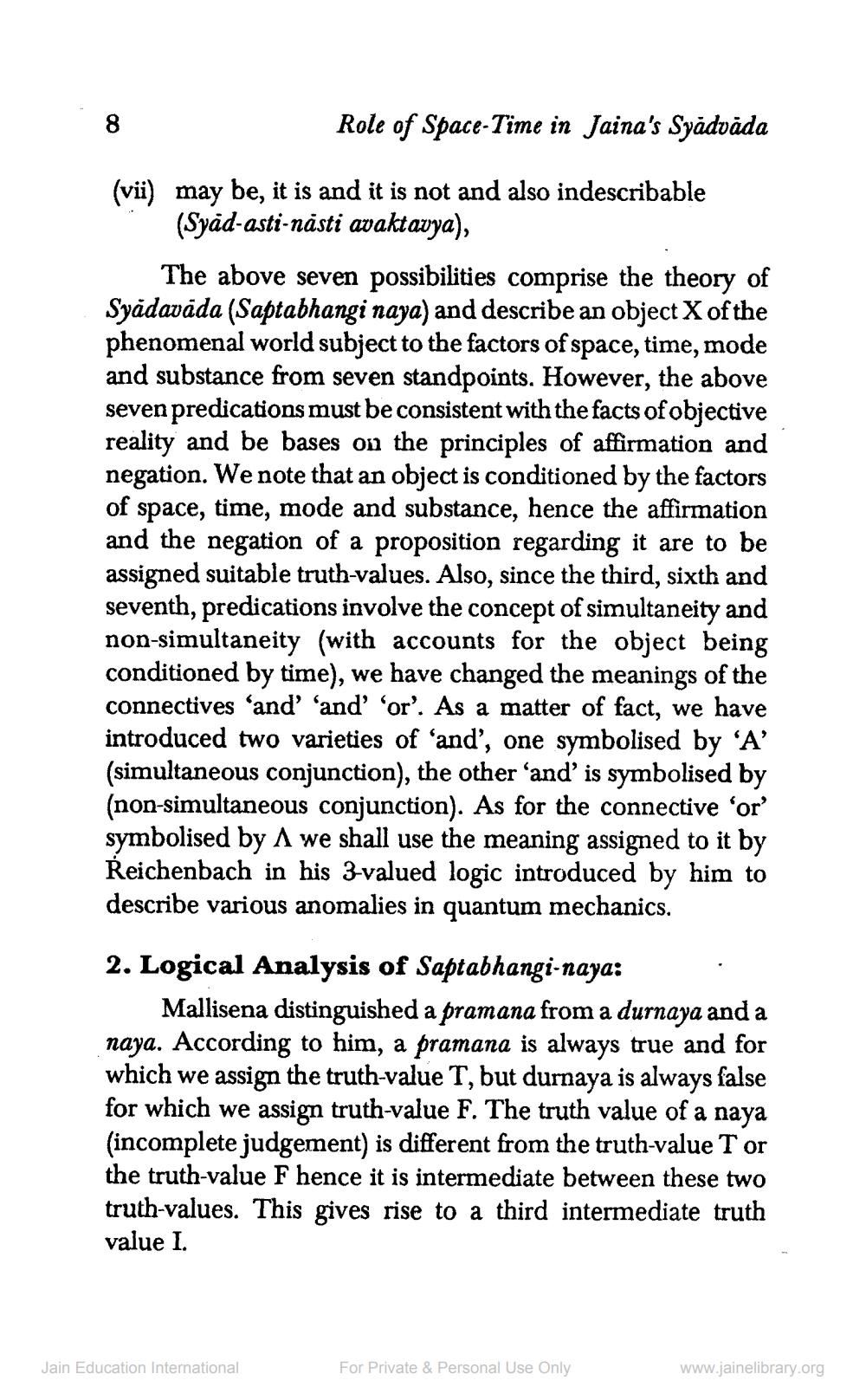________________
Role of Space-Time in Jaina's Syadväda
(vii) may be, it is and it is not and also indescribable
(Syad-asti-násti avaktavya),
The above seven possibilities comprise the theory of Syädavada (Saptabhangi naya) and describe an object X of the phenomenal world subject to the factors of space, time, mode and substance from seven standpoints. However, the above seven predications must be consistent with the facts of objective reality and be bases on the principles of affirmation and negation. We note that an object is conditioned by the factors of space, time, mode and substance, hence the affirmation and the negation of a proposition regarding it are to be assigned suitable truth-values. Also, since the third, sixth and seventh, predications involve the concept of simultaneity and non-simultaneity (with accounts for the object being conditioned by time), we have changed the meanings of the connectives 'and''and' 'or'. As a matter of fact, we have introduced two varieties of 'and', one symbolised by 'A' (simultaneous conjunction), the other ‘and' is symbolised by (non-simultaneous conjunction). As for the connective ‘or' symbolised by A we shall use the meaning assigned to it by Reichenbach in his 3-valued logic introduced by him to describe various anomalies in quantum mechanics.
2. Logical Analysis of Saptabhangi-naya: :
Mallisena distinguished a pramana from a durnaya and a naya. According to him, a pramana is always true and for which we assign the truth-value T, but durnaya is always false for which we assign truth-value F. The truth value of a naya (incomplete judgement) is different from the truth-value Tor the truth-value F hence it is intermediate between these two truth-values. This gives rise to a third intermediate truth value I.
Jain Education International
For Private & Personal Use Only
www.jainelibrary.org




